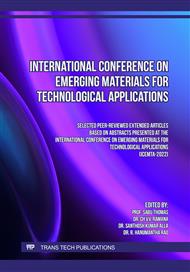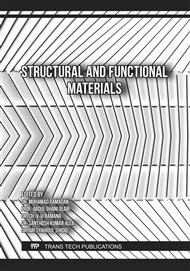p.3
p.11
p.19
p.29
p.39
p.45
p.53
p.65
Investigation of Mechanical Properties in Ductile Iron with Alloyed and Unalloyed at Time and Temperature on Austempering
Abstract:
Due to the combination of its numerous excellent mechanical qualities, the flexible iron has been used more and more since its invention in 1948. To develop significantly improved characteristics, the unnecessary investigation is being done. The most recent development in the field of flexible iron, or SG iron, is Austempererd malleable iron. At four different temperatures, two different types of spheroidal graphite (SG) cast iron samples with varying copper weight levels were austempered. The temperatures used for austempering were 200°C, 300°C, 350°C, and 400°C. As a component of the austempering time and temperature, the effect of the austempering process (i.e. time and temperature) on the mechanical characteristics of spheroidal graphite iron was investigated. The progress of spheroidal graphite iron's properties was significantly influenced by the pace of cooling and the extinguishing process. The organisation of different stages during isothermal change under varied austempering settings has also been the focus of XRD analysis. By using SEM, graphite morphology has been focused on. For this investigation, samples were obtained from the castings' focal point for XRD analysis. It was discovered that virtually always, it is possible to discriminate between the ferrite (110) and austenite (111) lines. The ferrite (110) line is growing with expanding austempering time and declining with increasing austempering temperature, whereas the highest power of the austenite (111) line is expanding with expanding temperature. Thus, very precise control of the interaction components (austempering duration and temperature) is required for austempering. The results showed that, when compared to other grades (N1) through the various austempering processes used in this evaluation, ADI containing the alloying component copper (grade N2) achieved crucial mechanical qualities.
Info:
Periodical:
Pages:
11-18
Citation:
Online since:
October 2023
Authors:
Price:
Сopyright:
© 2023 Trans Tech Publications Ltd. All Rights Reserved
Share:
Citation:



